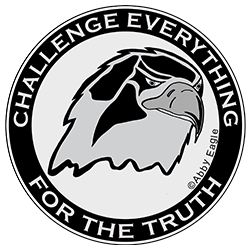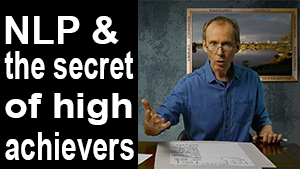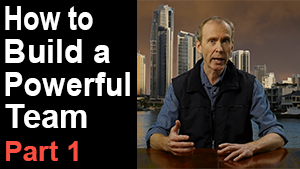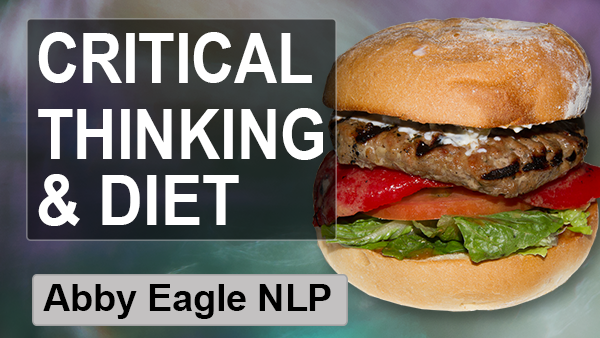
How to apply critical thinking skills to diet, nutrition and health using NLP, Hypnotherapy and Meditation - Gold Coast Australia ... Use the contact form in the right side bar to book a free 20 minute Skype or Zoom session.
How To Apply Critical Thinking To Diet, Nutrition & Health Using NLP
By Abby Eagle (2023)
Click the Image to Watch on YouTube
In this article I want to show you how to apply your critical thinking skills to diet, nutrition and health.
It begins by doing a contrastive analysis. This is what Dr Weston A Price did in the 1920’s-1930’s. He wanted to find a solution to tooth decay so what he did was to travel the world and study isolated groups of people living on a traditional diet and compare them to people living on the foods of commerce.
What he found was compelling. Those people living on a traditional diet had less than 1% tooth decay – the women had no difficulty in child birth – there was little degenerative disease –they were all well proportioned and the children looked like their parents and their close relatives. However the people in the same area living on the foods of commerce had rampant tooth decay – there was a narrowing of the racial form hence the women had difficulty in child birth – there was a lot of degenerative disease – and the children did not look like their siblings or their parents or their close relatives.
Even though the traditional diet varied between different groups there was similarity in the way that they prepared their foods and when asked why they went to such great efforts to feed their children they all replied, “Because we want to bring up strong healthy children”. Contrast that with why parents feed their children the way that they do today and you will find very different reasons. For example, one afternoon at a shopping centre I overheard a mother talking to her daughter. She says, “Monday you had McDonalds, yesterday you had Hungry Jacks – what would you like for dinner today?” So does this woman truly care about her daughter’s health? I don’t think so because if she did she would do a bit of research to learn as to what constitutes good nutrition.
So how do you apply critical thinking to diet? Critical thinking starts with curiosity – and as such is the process of asking questions and gathering information – challenging your assumptions – accepting that you are probably going to be wrong at least 50% of the time – putting aside your own subjectivity, biases, beliefs, feelings and preferences – focusing on factual information – evaluating the information – being open to new learnings – allowing new understandings to arise with no specific outcome or conclusion in mind – and being slow to form a belief – and even when a belief is formed being aware that as you gather more information that this belief may have to be replaced with a new one.
So armed with a sense of curiosity just look at everyone that you see in your everyday life whether that be on the street, at work, at home or in films and on the Internet.
Is the person well proportioned? Look at the face – look at the jaw – at the lips and the width of the smile – look at the teeth. Is the person tall or short – are they overweight or skinny? Are they sort of soft and pudgy or are they more lean cut and muscular? Do they have calf muscles or not? Are the breasts big or small? Does the woman have strong shoulders yet a narrow waist? Does the man have a more masculine or feminine look? No judgement is intended – all you are doing is being a dispassionate observer and gathering information.
After a while you should begin to see patterns. Recently I have noticed three young women who have the same body shape. Two are about 18 years old – well over 6 feet tall, attractive but skinny like a lamppost. I also saw a 14 year old shorter but with exactly the same proportions. I would have loved to ask them what they eat? Which is the next step.
So you start by looking at groups of people – for example looking at older people of one race or ethnicity and then compare them with their children. For example, I saw a Chinese woman about 45 years old – she was attractive and well proportioned but the 15 year old girl who I assumed was her daughter was taller than her mother – and bigger, softer with a more puffy westernised face.
You can also do research on the Internet and look for photographs of people from around 1900 all the way up to the present. The differences that you see will be the result of a difference in diet. If possible you need to get some details on the differences in diet.
For example, I had a client some years ago. A well proportioned, strong, handsome young man with a great jaw so I asked him what he ate as a child. He came from the outback in Australia and they ate sausages and eggs for breakfast – no bread, some vegetables but little fruit. When cholesterol and heart disease was in the news his mother got his dad to have a cholesterol test and the test results were perfect. Anyway this young man said all the kids and the young men and women in his home town were well proportioned like him – but when he came to the Gold Coast he noted that most young people were overweight and ill proportioned.
So the point of this conversation is for you to look at the differences in facial and body proportion between different cultures and different age groups. And then the challenge is to learn what they ate so whenever you can just ask people what they eat now – what they ate as a child and what they think their parents ate.
On one occasion I met a vegan family. They were nice people and wanted to take care of the environment but their 3 children were all quite skinny with very narrow mouths much like what you see in Japanese anime. They looked very different to their parents. We were at the organic markets and the children were snacking on tomatoes.
Contrast that with an Australian friend who was married to a Japanese man. They were both into traditional nutrition as per Weston A Price. Their 2 year old daughter used to snack on handfuls of white bait. White bait are small fish like anchovies. This girl and her sister grew up to be well proportioned beautiful young women with a great smile.
So let’s get back to our critical thinking skills. You want to improve your health or maybe you plan to have children and you want to feed them the best diet possible. So where to look? You could go online or speak to a dietician but who do you believe? A lot of information is based upon junk science which was designed to reinforce the mainstream narrative and sell you a consumer product.
As I said before you have to get curious and try and uncover the information that is not being presented to you. For example, if a group of people ate beef, lamb, goat, chicken and fish then did they just eat the lean meat and feed the organ meat and the bones to the dogs – or did they also eat the organ meat and make a broth from the bones?
You can also search YouTube for videos of people living in remote regions of the world such as Tibet, Afghanistan, Iran, Mongolia, etc –take a look at their lifestyle – what they eat and how they prepare their food – and then compare their diet and body proportions to people living in a different part of the world on a different diet. And make sure that you do a comparison between the lifestyle – the source of the food – how they prepared the food and cooked it - and when, where and how they eat the food?
So to summarise – in bringing your critical thinking skills to your diet – you need to get real curious – use your eyes – challenge your assumptions and make distinctions between what looks like a healthy well proportioned human being and someone who is not. Then you need to get curious about what they ate as a child and what their parents and grandparents ate – the source of the food – how the food was prepared and their lifestyle. When you explore the dietary habits of healthy traditional groups you will find that there is a massive difference between what they ate and what most people are eating today.
So in simple terms what you are doing is challenging your assumptions. If you want to teach your friends to get into the habit of questioning their assumptions then show them how to play the NLP Match Box Game.
And if you want to develop the skills of an investigative journalist then take a look at the NLP Peace Mapping Course.
And if you would like some help in making better food choices or changing a bad habit then feel free to send me an email and organise a free 20 minute Skype or Zoom session – and if you have not done so then please comment below, and join us over at the Facebook NLP & Hypnotherapy Group.
Share With Friends
| DISCUSSION GROUPS | |
|---|---|
 |
|
| NLP Future Selfing | |
| NLP, Hypnotherapy & Meditation | |
| NLP Peace Mapping | |
| Facebook Discussion Group | |
| The secret of high achievers |
|---|
 |
| How to build a powerful team |
 |
| Learn the NLP Meta Model |
 |
| How I stopped drinking alcohol. |
 |
| How to coach yourself using NLP. |
 |




